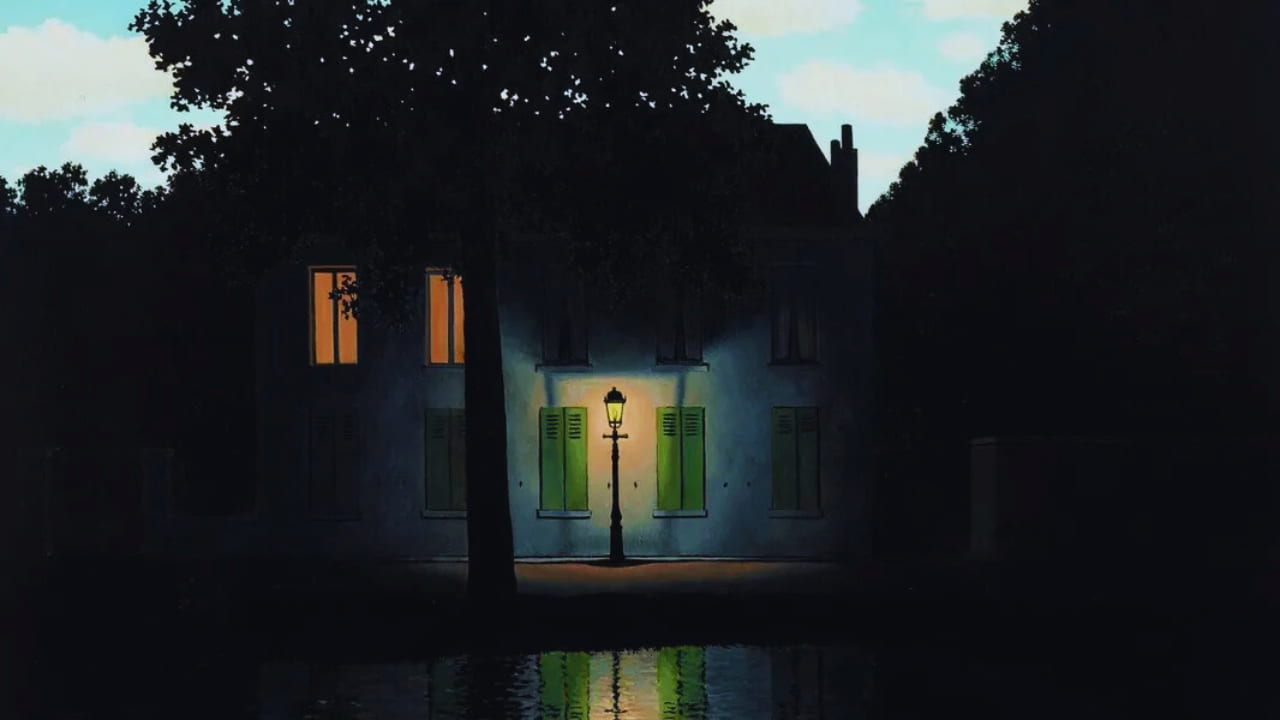In a dramatic turn of events that has sent ripples through the art world, René Magritte’s haunting masterpiece “The Empire of Light” has claimed its place among art history’s most valuable works, selling for an astounding $121.2 million at Christie’s New York auction house.
The packed salesroom buzzed with excitement as two determined phone bidders engaged in a 10-minute duel for the prized painting. Christie’s dark gray-painted room perfectly set the atmosphere, with mood lighting that seemed to pay homage to Magritte’s surrealist style.
The painting, which shows a mysterious street at night beneath a bright daylight sky, has now crowned Magritte as the 16th artist to join the exclusive “$100 Million Club.” He now stands alongside legendary names like Leonardo da Vinci, Pablo Picasso, and Andy Warhol.
Standing nearly five feet tall, this 1954 version of “The Empire of Light” holds special significance as the last of 19 works offered from Mica Ertegun’s collection. The late socialite, designer, and philanthropist acquired this masterpiece privately in 1968.
What makes this piece unique is that it’s the first in the series to feature water in the foreground, adding another layer of intrigue to Magritte’s signature style of blending reality with dreams. Brussels gallery director Paolo Vedovi puts it simply: “Every big collector now wants a Magritte. He’s so current, so poetic. His work helps you escape from the everyday world.”
The timing of this record-breaking sale is particularly meaningful, coming during what many see as a pivotal moment in the art market. After a two-year slump, the market shows signs of revival, with this sale serving as a powerful indicator of renewed confidence among wealthy collectors.
The evening didn’t stop with Magritte. Another of his works, a paper gouache also depicting a day-night scene, sold for $18.8 million—more than double its expected price. Ed Ruscha’s massive gas station painting “Standard Station, Ten-Cent Western Being Torn in Half” also impressed, fetching $68.2 million.
What makes Magritte’s achievement even more remarkable is the current state of the global art market. Christie’s has seen its sales drop 22% compared to last year, according to Art Basel and UBS’s 2024 Survey. Yet, this sale proves that exceptional pieces still command extraordinary prices.
The artist’s journey to this pinnacle is as fascinating as his art. Magritte, born to a tailor father and a milliner mother in Belgium, experienced tragedy in his early life when his mother drowned at the age of 13. This personal history adds layers of meaning to his work, especially his frequent use of water imagery.
David Norman, a seasoned art adviser, explains the enduring appeal of masterpieces like “The Empire of Light”: “The higher the quality, the more difficult to find in good times or bad—and the more buyers know they just can’t wait to find a better one.”
As this historic sale shows, Magritte’s ability to challenge our perception of reality continues to captivate collectors and art lovers alike. His unique vision, merging day and night, dream and reality, has now earned him not just artistic immortality but a place among the most financially valuable artists in history.
The sale reminds us that in an increasingly uncertain world, great art maintains its power to move us—and its value as a prime investment. As we look to the future of the art market, Magritte’s triumph suggests that the intersection of artistic excellence and market value remains as strong as ever.
